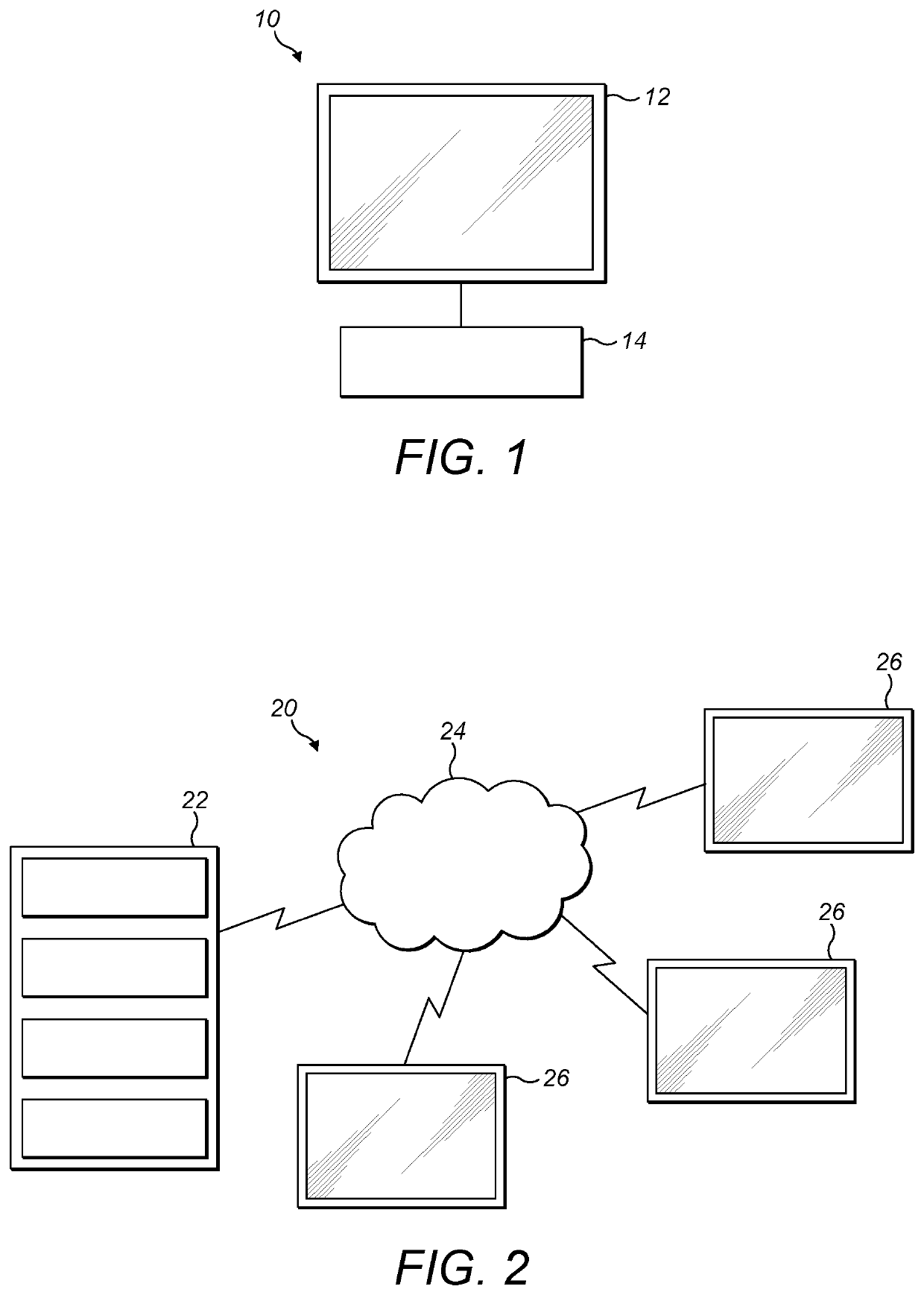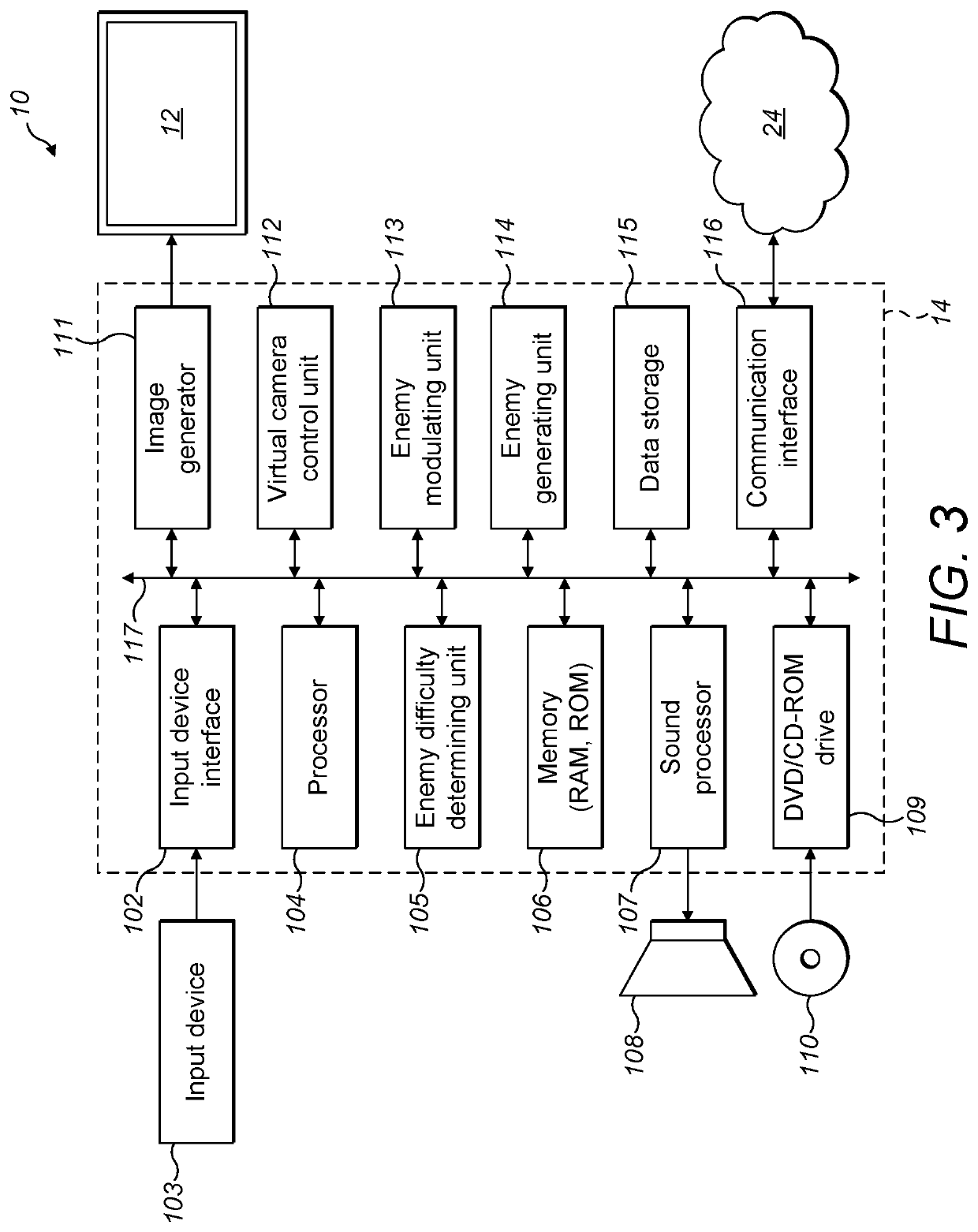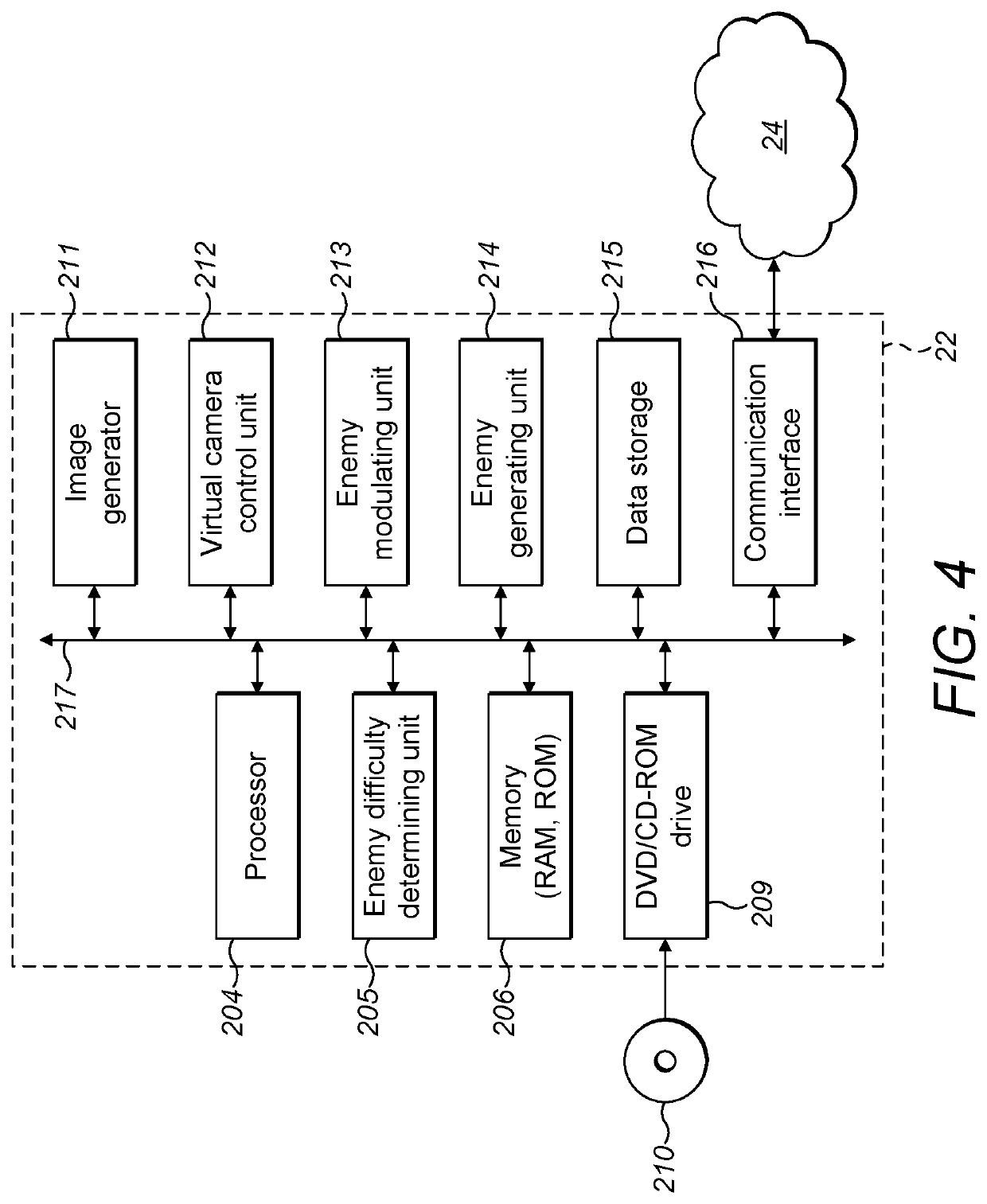Rebalancing of in-game activity in multiplayer video games
a multiplayer video game and in-game activity technology, applied in the field of video games, can solve the problems of spoiling the enjoyment of the game for the remaining players, causing the remaining players and their respective player characters to fend off, and causing more difficulty in comba
- Summary
- Abstract
- Description
- Claims
- Application Information
AI Technical Summary
Benefits of technology
Problems solved by technology
Method used
Image
Examples
Embodiment Construction
[0049]The present embodiments represent the best ways known to the Applicant of putting the invention into practice. However, they are not the only ways in which this can be achieved.
[0050]To adjust and rebalance in-game activity in a multiplayer video game in response to player drop-in or drop-out, embodiments of the present invention provide an enemy difficulty determining, enemy modulating and enemy generating routine that forms part of the video game.
[0051]The concept of “enemy difficulty” is essentially the difficulty faced by the player characters in respect of defeating the enemy characters they encounter, and is discussed in greater detail below. The enemy difficulty may be a function of one or more of: the number of enemy characters present; the rate of generation of enemy characters; and attributes of the enemy characters (e.g. enemy health, enemy damage, enemy resistance, enemy armour, enemy type, enemy strength, enemy equipment, enemy skill and enemy ability).
[0052]The v...
PUM
 Login to View More
Login to View More Abstract
Description
Claims
Application Information
 Login to View More
Login to View More - R&D
- Intellectual Property
- Life Sciences
- Materials
- Tech Scout
- Unparalleled Data Quality
- Higher Quality Content
- 60% Fewer Hallucinations
Browse by: Latest US Patents, China's latest patents, Technical Efficacy Thesaurus, Application Domain, Technology Topic, Popular Technical Reports.
© 2025 PatSnap. All rights reserved.Legal|Privacy policy|Modern Slavery Act Transparency Statement|Sitemap|About US| Contact US: help@patsnap.com



